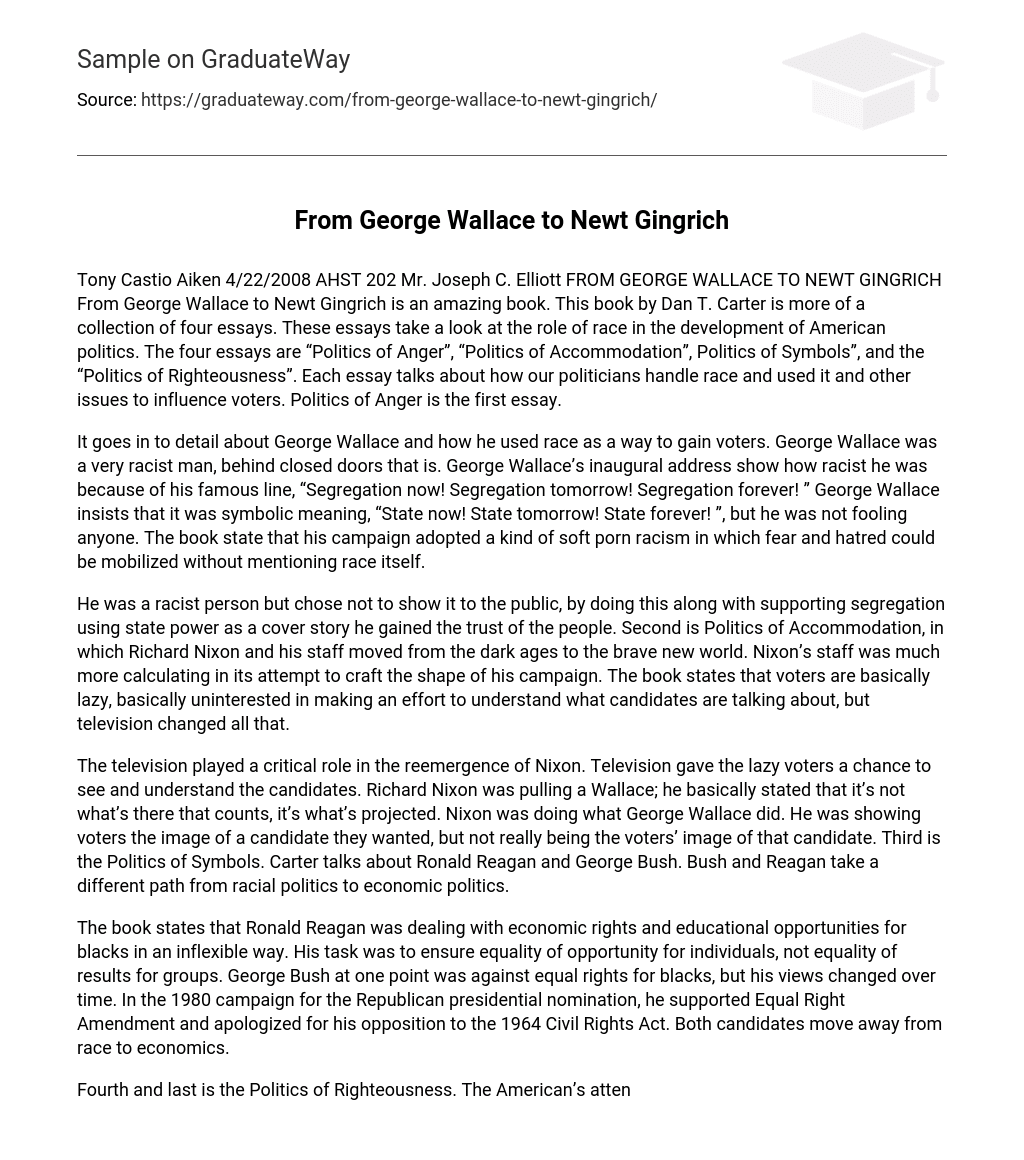From George Wallace to Newt Gingrich book by Dan T. Carter is more of a collection of four essays. These essays take a look at the role of race in the development of American politics. The four essays are “Politics of Anger”, “Politics of Accommodation”, Politics of Symbols”, and the “Politics of Righteousness”. Each essay talks about how our politicians handle race and used it and other issues to influence voters. Politics of Anger is the first essay.
It goes in to detail about George Wallace and how he used race as a way to gain voters. George Wallace was a very racist man, behind closed doors that is. George Wallace’s inaugural address show how racist he was because of his famous line, “Segregation now! Segregation tomorrow! Segregation forever! ” George Wallace insists that it was symbolic meaning, “State now! State tomorrow! State forever! ”, but he was not fooling anyone. The book state that his campaign adopted a kind of soft porn racism in which fear and hatred could be mobilized without mentioning race itself.
He was a racist person but chose not to show it to the public, by doing this along with supporting segregation using state power as a cover story he gained the trust of the people. Second is Politics of Accommodation, in which Richard Nixon and his staff moved from the dark ages to the brave new world. Nixon’s staff was much more calculating in its attempt to craft the shape of his campaign. The book states that voters are basically lazy, basically uninterested in making an effort to understand what candidates are talking about, but television changed all that.
The television played a critical role in the reemergence of Nixon. Television gave the lazy voters a chance to see and understand the candidates. Richard Nixon was pulling a Wallace; he basically stated that it’s not what’s there that counts, it’s what’s projected. Nixon was doing what George Wallace did. He was showing voters the image of a candidate they wanted, but not really being the voters’ image of that candidate. Third is the Politics of Symbols. Carter talks about Ronald Reagan and George Bush. Bush and Reagan take a different path from racial politics to economic politics.
The book states that Ronald Reagan was dealing with economic rights and educational opportunities for blacks in an inflexible way. His task was to ensure equality of opportunity for individuals, not equality of results for groups. George Bush at one point was against equal rights for blacks, but his views changed over time. In the 1980 campaign for the Republican presidential nomination, he supported Equal Right Amendment and apologized for his opposition to the 1964 Civil Rights Act. Both candidates move away from race to economics.
Fourth and last is the Politics of Righteousness. The American’s attention has moved from racism to religion. In this essay it talked about George Bush’s and Bill Clinton’s views on religion. To sum this essay up, Patrick Buchanan said during a convention “that this is a religious war and in this struggle for the soul of America Bill Clinton and Hillary Clinton are on the other side and George Bush is on our side. ” Basically Patrick Buchanan was trying to say that only one person can be right, leaving the other to be wrong.





